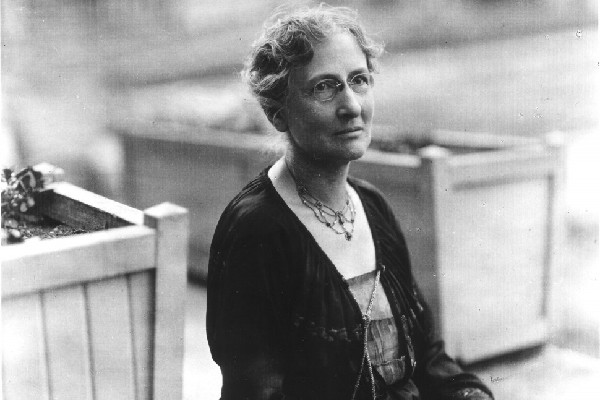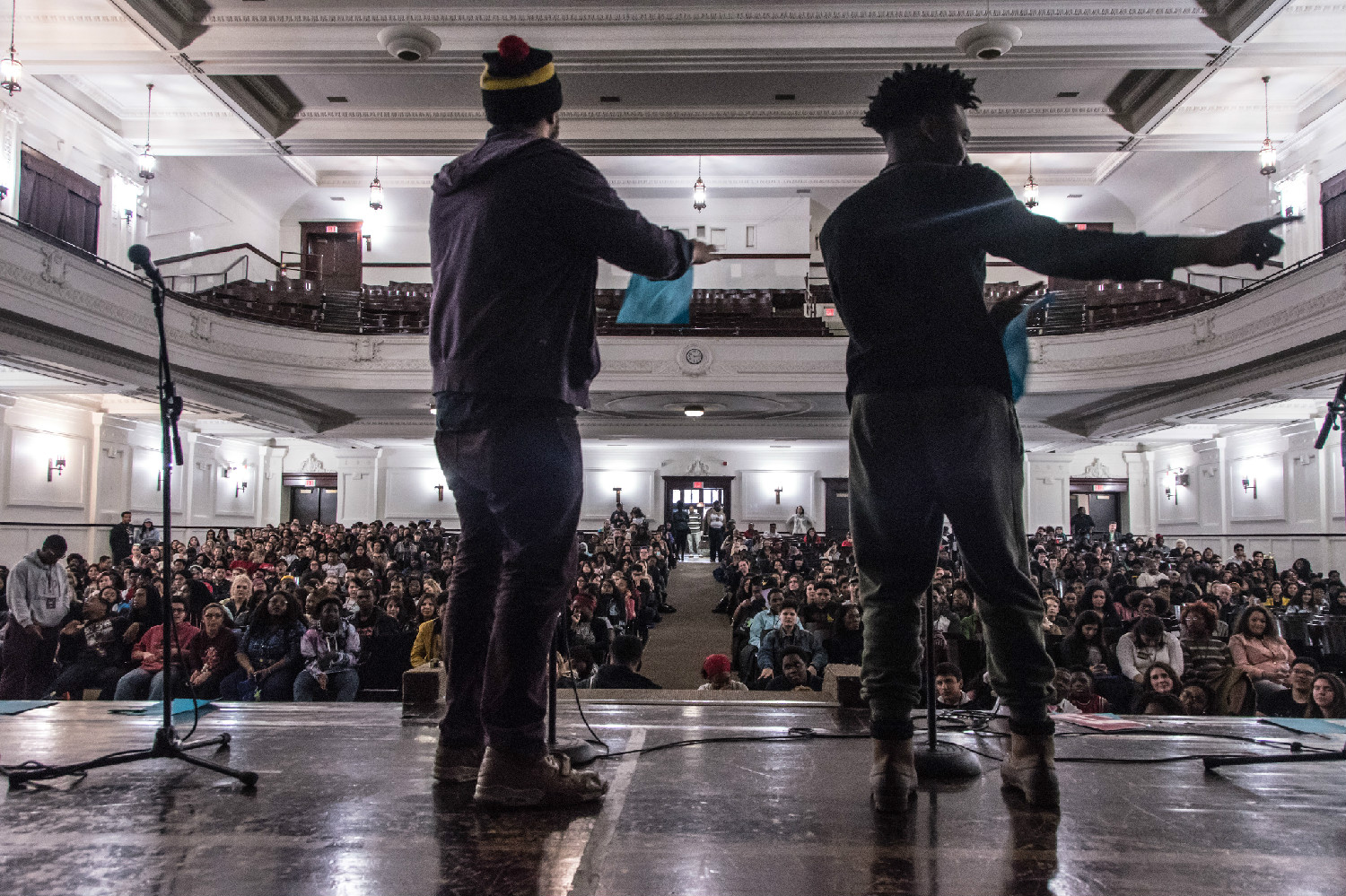In some countries, cultural capitals are easy to identify: Paris, Copenhagen, and Buenos Aires are synonymous with the arts in France, Denmark, and Argentina. But thanks to Thomas Edison—whose aggressive camera patents drove the motion picture industry away from the East Coast in the 1910s—American arts and culture is often ascribed to two cities: New York for theatre, dance, and book publishing, Los Angeles for film and television (although Jacksonville almost won that lottery).
Chicago’s role is harder to define. We’re certainly the birthplace of modern improv and sketch comedy, but what happens when our best comedians break out? They move to NYC or LA. With a few exceptions, the same thing happens to our musicians. And while the city’s food scene has seen a resurgence, our 33 Michelin stars pale in comparison to New York’s 93, and it sounds like that bubble may be bursting.
But what about… poetry?
The Institutions
In a sense, Chicago started with a poem. Not the first Chicago—the tar-and-timber town destroyed by the 1871 fire—but the modern city that rose from its ashes in the late 19th century.
On October 21, 1892, more than 100,000 people gathered in what was then the largest covered building in the world, the Manufactures and Liberal Arts Building in Jackson Park. The occasion: a dedication ceremony for the World’s Columbian Exposition. On a grand stage at the south end of the building, a 32-year-old woman stepped forward to read the poem she’d been commissioned to write for the event, The Columbian Ode.
Her name was Harriet Monroe, a freelance writer for the Chicago Tribune, and the sister-in-law of Daniel Burnham’s partner in designing the fair, John Wellborn Root. Two decades later in 1912, Monroe founded Poetrymagazine in the Fine Arts Building on Michigan Avenue—a publication that is to poetry what the The New York Times is to journalism.
Why? Because it brought modernist ideas to the rest of the world by publishing Ezra Pound, T.S. Eliot, Marianne Moore, William Carlos Williams, and Carl Sandburg before anyone else. And because in 2018, it’s still one the world’s most influential poetry outlets—and it’s still in Chicago.
“It is not possible to imagine contemporary American poetry without the city of Chicago and Poetry magazine,” says Don Share, editor of Poetry since 2013. I spoke to him in his office at the Poetry Foundation, a nonprofit extension of the magazine created in 2003 thanks to a surprise $200 million gift from the late Indianapolis philanthropist, Ruth Lilly.
“You look at the other literary magazines of the time, located in places like New York and Paris, and for the most part, they didn’t last,” Share says. “By being located in the conventional places for art and literature, they were were subject to the zeitgeist… to the the trends. But in Chicago, there was a sense that you could do anything here. You could build the tallest buildings. You could reverse the flow of the river. Chicago was waiting for something to be written on it in terms of culture.”
But Poetry magazine’s historical contributions to modernism (as well as its short-lived competitors in the Fine Arts Building, The Little Review and The Dial) are far from the only feather in Chicago’s poetry cap. The attendant Poetry Foundation, though less than two decades old, has emerged as a bustling cultural event space, drawing hundreds of poets and thousands of readers every year to their combination office, library, and event hall in River North.
A mile southwest of the Poetry Foundation, another nonprofit, the Poetry Center of Chicago, operates reading series, workshops, and literacy residency programs throughout the city in Chicago Public Schools. And on the West Side, Young Chicago Authors pairs young people with some of Chicago’s most celebrated poets (see below) to continue the tradition of Gwendolyn Brooks and Studs Terkel.

In addition to Poetry magazine, Chicago is home to other notable outlets for contemporary poetry. The Chicago Review, founded by graduate students at the University of Chicago in 1946, was at the center of the Beat poetry controversy a few years later when it ran an excerpt from William S. Burroughs’s Naked Lunch—leading to the Chicago Daily News front page headline, “Filthy Writing on the Midway”—and then again when the university censored its editors from publishing Jack Kerouac and Edward Dahlberg.
Newer outlets include the nonprofit MAKE literary magazine, which pairs English language poets like Ada Limón with translations of Spanish poetry; TriQuarterly, Northwestern’s literary magazine, which just published Pulitzer winner Tracy K. Smith and National Book Award winner Daniel Borzutzky; Columbia Poetry Review, a regular client of the Best American Poetry anthology; and Arcturus, a Chicago Review of Books spin-off. [Full disclosure: the writer is the editor-in-chief of Chicago Review of Books.]
Of course, institutions and publications are just two boxes that a city must tick in order to qualify as the American poetry capital. After all, New York is home to the Academy of American Poets, The Paris Review, Guernica, Four Way Books, and some of the world’s best reading venues, not to mention the Big 5 publishing companies (though poetry is more often published by independent and university presses).
So, what about the poets themselves?
The Poets
In the 1910s, when Harriet Monroe was cranking out the first issues of Poetry, another publication across town, the Chicago Defender, was calling on African-Americans in the Southern states to relocate to Chicago. “In the 1920s and ‘30s, [the publisher, Robert Sengstacke Abbott] was even dubbed the Moses of Black America for the role The Defender played in motivating the multitudes to leave Dixie for the Promised Land,” writes Ethan Michaeli in The Defender: How the Legendary Black Newspaper Changed America.

The result was the Great Migration, which brought thousands of black southerners to the South Side of Chicago beginning in 1916. Many of their sons and daughters would become key figures in the Chicago Black Renaissance during the 1930s and 40s. A group of legendary poets who championed social realism—Gwendolyn Brooks, Margaret Walker, Frank Marshall Davis, Fenton Johnson, Arna Bontemps, and others—gathered regularly at Bronzeville landmarks like the Branch Hall Library, the South Side Community Art Center, and as the “South Side Writers Group” at the Abraham Lincoln Centre on Cottage Grove.
Of course, that was almost a century ago. To make a case for Chicago as the American poetry capital, you can’t ignore the present.
Ask a literary person where to find the greatest concentration of poets in the United States today, and they might point you toward New York City—specifically, Brooklyn. But in my mind, New York’s literary reputation has always been more associated with prose writers. Poets are more likely to fall on the “MFA” side of the MFA vs. NYC spectrum, which means they often live where they teach—in cities and college towns across the country—as opposed to clustering in a single location, like actors in Hollywood and playwrights in Manhattan.

Still, in an attempt to be evidence-based, I looked at who won Pulitzers and National Book Awards for poetry from 2000 to 2017, to see if any geographical loci presented themselves. The only city with more than two winners during that period was . . . New York, with four Pulitzers and two NBAs.
A “Chicago” poet hasn’t won a Pulitzer since Gwendolyn Brooks in 1950, but what makes a poet “Chicagoan”? Last year’s winner, Tyehimba Jess, made a huge impact here but is more often associated with his native Detroit, and currently teaches in New York. Lisel Mueller won in 1997, but she lived in nearby Lake County. City Colleges professor Daniel Borzutzky ended our NBA drought last year with The Performance of Becoming Human, and 2007 Pulitzer-winner Natasha Trethewey joined the faculty at Northwestern in 2016.
Counting major awards probably isn’t the best method for judging a city’s poetry scene, particularly since they favor mid- and late-career poets — and Chicago’s poetry is in the middle of a youth renaissance. Louder Than A Bomb, the largest youth poetry festival in the world, has gathered thousands of local poets to venues across Chicago since 2001. Together with Young Chicago Authors, many of its staff and alumni have become national figures in an activist-minded tradition of modern poetry that builds upon the legacy of Gwendolyn Brooks — people like Nate Marshall, Eve Ewing, Jamila Woods, Kevin Coval, even Chance the Rapper.
“I don't know where Chicago would rank as a poetry capital,” says Nate Marshall, YCA’s Director of National Programs and an editor of The BreakBeat Poets Vol 1. “But I think it's true that this city has a long history of producing and supporting incredible poets who have a vision that is not only artistic, but also political.”
Verdict?
If you’ve attended enough events in Chicago over the past seven years, you’ve probably run into a group of poets hanging around with typewriters. Poems While You Wait, founded by Kathleen Rooney and Dave Landsberger, is the kind of thing that would coalesce in the capital of American poetry: on-demand, typewritten poems en plein air.
Like most local poets—like everyone but Don Share, really—Kathleen Rooney isn’t sure if Chicago qualifies as the world capital of anything. “Instinctively, I try to resist superlatives,” she says. She points to many of the institutions mentioned above, as well as our college and university writing programs, as proof that Chicago is “a world-class city for poetry,” at the very least. “On any given night, if you choose to go to one poetry event, odds are good you're missing another one somewhere else that would be excellent in a totally different way.”
A colleague of mine, Amy Brady, wondered a few years ago if Topeka, Kansas might deserve the title of America’s “most poetic” city. And she ran into one of the same problems as me: what makes a poet a Topekan, or a Chicagoan? Did you know Gwendolyn Brooks was born in Topeka? I didn’t. Did you know Langston Hughes lived in Chicago for a few years during the Chicago Black Renaissance, and published poetry in the Defender? I didn’t, either.
Given the nomadic nature of poets, particularly in the MFA era, it’s probably impossible to declare a single city the poetry capital of America. New York, San Francisco, and Boston could all make a decent case. I suppose the only question we might be able to answer is, “What has drawn so many brilliant poets—and homes for poetry—to Chicago over the past 100 years?”
According to Kathleen Rooney, “Poetry is a way to pay attention, and Chicago gives poets a lot to pay attention to.” How poetic.
Nate Marshall reads "When the Officer Caught Me":
Eve Ewing reads "Arrival Day":
Natasha Trethewey reads "Elegy":
Daniel Borzutzky reads "The Devouring Economy of Nature":



